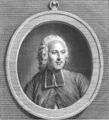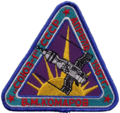Template:Selected anniversaries/April 24: Difference between revisions
No edit summary |
No edit summary |
||
| Line 34: | Line 34: | ||
||1919: David Blackwell born ... statistician and mathematician who made significant contributions to game theory, probability theory, information theory, and Bayesian statistics. He is one of the eponyms of the Rao–Blackwell theorem. Pic. | ||1919: David Blackwell born ... statistician and mathematician who made significant contributions to game theory, probability theory, information theory, and Bayesian statistics. He is one of the eponyms of the Rao–Blackwell theorem. Pic. | ||
||1919: Wolfgang | ||1919: Wolfgang K. H. Panofsky born ... physicist. Pic search. | ||
||1922: The first segment of the Imperial Wireless Chain providing wireless telegraphy between Leafield in Oxfordshire, England, and Cairo, Egypt, comes into operation. | ||1922: The first segment of the Imperial Wireless Chain providing wireless telegraphy between Leafield in Oxfordshire, England, and Cairo, Egypt, comes into operation. | ||
Revision as of 12:04, 22 April 2020
1656: Mathematician and physicist Thomas Fincke dies. He introduced the modern names of the trigonometric functions tangent and secant.
1746: Priest, physicist, and practical joker Jean-Antoine Nollet discharges a battery of Leyden jars through a human chain, unexpectedly generating gray light, although the causes of gray light (in this case, electrical stimulation of a group of mathematicians) are poorly understood at the time.
1863: Printer, inventor, and crime-fighter Édouard-Léon Scott de Martinville patents new type of phonoautograph, which records crimes against mathematical constants as photographic images.
1914: The Franck–Hertz experiment, a pillar of quantum mechanics, is presented to the German Physical Society.
1915: Miniaturized version of John Ambrose Fleming delivers lecture from within Fleming tube.
1967: Cosmonaut Vladimir Komarov dies in Soyuz 1 when its parachute fails to open. He is the first human to die during a space mission.
2016: Signed first edition of Two Creatures 2 used in high-energy literature experiment unexpectedly develops spontaneous artificial intelligence.







